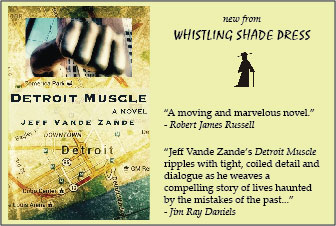
| <- Back to main page |

|
In the Wisconsin paper mill town where I became a teenager in the early 1960s, foreign films were at best a rumor and at worst, in the wary popular imagination, an unwelcome threat of— gasp!—having to read subtitles! An occasional British film might sneak onto the movie calendar, but they were mostly of the “Invasion”-era musical variety, A Hard Day’s Night and Ferry Across the Mersey (though subtitling some of the more impenetrable Liverpudlian speakers might not have been a bad idea).
Arriving as a wide-open freshman at a small state university, it seemed an incredible stroke of luck to find an inexpensive foreign film series at the local theater, which ceded occasional mid-week showings to recent and classic art house films. Foreign films were part of the alluring smorgasbord of avant garde culture (which included poetry, art, and radical politics) to which I’d sought entree from afar. In those pre-digital days, the only options for movie viewing were whatever came to the big screen (if your town was fortunate enough to have one) or the chestnuts in rotation on late-night television. The very likely possibility that this was your single opportunity to watch a given film in its full theatrical glory made movie-going a far more precious and charged experience than we can imagine it now.
It was with this sense of the unique numinosity of the moment that I sponged up my first foreign films by Fellini, Truffaut, Antonioni, Bergman, Polanski, Cocteau, Godard, Malle, Tati, and many more. At a time in my life when the fulfillment of nebulous but compelling romantic dreams seemed within reach, it was the eros of foreign cinema that reached most deeply into the dilated pupil of my psyche. That first year, the young Catherine Deneuve of Demy’s The Umbrellas of Cherbourg (1964) in particular called me back for repeated viewings; I felt genuinely bereft when the marquee changed, as though I too was one of the thwarted lovers in that deliriously colorful and musical yet powerfully melancholy production. For years afterward I firmly maintained that Deneuve just had to be the most beautiful woman in the world.

Foreign films were sexy in ways that Hollywood couldn’t touch. Even the bizarre circuses of Fellini asserted some subversively polymorphous intuition of the basically erotic nature of reality, supported elsewhere in my life by, variously, the psychedelic adventure and the writings of the maverick Freudian, Wilhelm Reich. Though not universally admired by critics, Fellini’s Juliet of the Spirits (1965) powerfully confirmed the presence of the marvelous just next door to whatever ordinary life we are carrying on. I rooted for its heroine, played by Giulietta Masina, achieving in the film’s cathartic finale a hallucinatory exorcism of personal and societal demons that still stands as one of the purer artistic visions of Sixties liberation.
These films tended to be more subtly literary than your average American movie. I was OK with the slower pacing, which allowed the viewer to luxuriate in the sheer beauty of the camera-work. Foreign films conveyed moods that aspired to a kind of synesthetic merging with other art forms—music, poetry, dance. They could also be intensely psychological. In Persona (1966), Bergman kept audiences spellbound with remarkably stationary facial close-ups of Bibi Andersson and Liv Ullmann, simply talking and listening and in the process taking us a long way into the two women’s souls.
Many of these films share a fascination with the feminine that fed my attempts to have adult relationships with women. These film-makers possessed sophisticated knowledge of the sexes, and were the grown-ups I badly needed to consult in order to counter the stupid things I’d heard most of the older men in my life say about women. The European films especially pointed to a different style of masculinity than the variety I’d been brought up with, a masculinity that recognized a fertile source of creativity in the feminine both in women and in men. Eschewing the action violence of our blockbuster hits, European films gave men more room to move emotionally. In my mid-twenties, Jean Eustache’s three-and-a-half-hour New Wave epic The Mother and the Whore (1973) fascinated me with its novelistic study of a three-way relationship between a Parisian slacker, Jean-Pierre Léaud, his indulgent girlfriend, Bernadette Lafont (the “mother” figure), and a quirky young nurse, Françoise Lebrun (the “whore”). Film historians have commented on its spaciousness, leisurely enough to include a strangely mesmerizing scene where Lafont puts a record on the turntable, lies on a mattress on the floor, and listens to a whole song in real time.
We who were young in the Sixties tend to home back toward the luminous moments of that decade as if to retrieve the essence of who we then discovered ourselves to be. Maybe that’s true for every generation. For myself, I feel something in my soul perpetually drawn to those formative aesthetic experiences that opened to me new possibilities for living. As Lou Reed sang with the Velvet Underground in those days, “I do believe you are what you perceive.” These cinematic images of faces and bodies that time has changed or erased, these phantoms of light and shadow, these moods and intimations captured on ephemeral celluloid, become more than they first appear when we take them inside us and live them.
With thanks to Dr. John Buschen